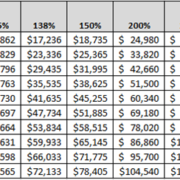Benefits Breakdown

Understanding Prescription Drug Pricing Trends
In 2019, the United States spent nearly $370 billion on prescription drugs, keeping trend with significant increases year over year. Although prescription drug spending has historically been a small proportion of national health care costs compared to hospital and physician services, it has grown rapidly in recent years—comprising about 10% of national health care spending. Below are the two major factors contributing to the rise of prescription drug costs:
- Influx of specialty drugs—Specialty medications account for a smaller portion of U.S. prescriptions than non-specialty drugs, yet they command nearly half of the pharmaceutical market. In 2021, experts predict an 11.5% increase in specialty drug prices, compared to a 2.8% rise in non-specialty drug prices. These manufacturer price increases are often cited by insurers as reasons for rising insurance premiums.
- Price inflation—According to a Segal report, 40% of new products recently launched by drug manufacturers were specialty medications. These drugs are now being pushed at a higher rate than non-specialty drugs, contributing to price inflation. Specialty drug utilization increased by nearly 6% in 2020, whereas non-specialty drug usage remained relatively the same. And there is little recourse for anyone seeking an alternative to these specialty drugs.
Yet, despite these trends, there are cost-cutting strategies available to employers. These include managing drug usage, utilizing rebates, and educating employees. Reach out to learn more about these and other budgetary tactics.
3 Voluntary Benefits Trends to Watch in 2021
Voluntary benefits have always been great tools for rounding off employee benefits offerings. And that value isn’t lost on employers—at least 50% offer some sort of voluntary benefits, according to an Alera Group report. Employers can expect to see voluntary benefits grow in these three key areas in 2021:
- Expanded offerings such as eldercare and critical illness insurance
- A focus on financial wellness, including budget counseling and financial planning
- Greater customization, allowing employees to pick and choose what’s best for them
Voluntary benefits include dental, vision, critical illness, pet insurance, and similar offerings that are paid for partially by employees. During the COVID-19 pandemic, having additional benefits options like these could be exactly what employees need. Specifically, these trends indicate employees want more control over the benefits that are important to them.
Reach out to learn how to help employees maximize their voluntary benefits.


















